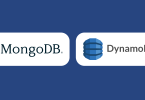Here we show how to set up a Cassandra cluster. We will use two machines, 172.31.47.43 and 172.31.46.15. First, open these firewall ports on both:
7000 7001 7199 9042 9160 9142
Then follow this document to install Cassandra and get familiar with its basic concepts. Make sure to install Cassandra on each node.
(This article is part of our Cassandra Guide. Use the right-hand menu to navigate.)
Configure Cluster Setting
There is no central master in a Cassandra cluster. Instead you just make each one aware of the others and they work together.
First we will edit /etc/cassandra/cassandra.yaml on both machines set the the values as shown in the table below. Don’t change the cluster name yet. We will do that later.
-
- seeds—set the IP address on one machine to be the seed. It is not necessary that all machines be seeds. Seeds are nodes that Cassandra nodes use when you start Cassandra start to find other nodes.
- listen_address—the IP address for Cassandra to run.
- endpoint_snitch—this is used to determine where to route data and send replicas. We use the default below. There are several. The others are rack-aware, meaning they would not put a replica on the same physical storage rack as another. If you did that and the whole rack failed the data could be lost. There is even one (Ec2Snitch) designed for Amazon EC2 that can spread data across Amazon Zones.
| machine 172.31.46.15 settings | machine 172.31.47.43 settings |
endpoint_snitch: SimpleSnitch - seeds: "seeds: 172.31.47.43" listen_address: 172.31.46.15 |
endpoint_snitch: SimpleSnitch - seeds: "seeds: 172.31.47.43" listen_address: 172.31.47.43 |
Now run on both machines:
sudo service cassandra start
Then wait a few seconds for discovery to work and then run on both machines:
nodetool status
It should show both nodes:
Datacenter: datacenter1 ======================= Status=Up/Down |/ State=Normal/Leaving/Joining/Moving -- Address Load Tokens Owns (effective) Host ID Rack UN 172.31.46.15 245.99 KiB 256 100.0% fb1d89bb-cbe2-488f-b2e7-da145bd2dde7 rack1 UN 172.31.47.43 196.01 KiB 256 100.0% 472fd4f0-9bb3-48a3-a933-9c9b07f7a9f6 rack1
If you get any kind of error message look in /var/log/cassandra/system.log
Now let’s change the name of the cluster from the defaut. Run cqlsh and then paste in the SQL below. Cassandra does not replicate this system change across the cluster so you have to run this on both machines.
UPDATE system.local SET cluster_name = 'Walker Cluster' where key='local';
Now edit /etc/cassandra/cassandra.yaml and change the cluster name to whatever you want. It should be the same on both machines:
cluster_name: 'Walker Cluster'
Then:
sudo service cassandra restart
Run this check again:
nodetool status Datacenter: datacenter1 ======================= Status=Up/Down |/ State=Normal/Leaving/Joining/Moving -- Address Load Tokens Owns (effective) Host ID Rack UN 172.31.46.15 312.4 KiB 256 100.0% fb1d89bb-cbe2-488f-b2e7-da145bd2dde7 rack1 UN 172.31.47.43 294.71 KiB 256 100.0% 472fd4f0-9bb3-48a3-a933-9c9b07f7a9f6 rack1
Now, following these instructions from our introduction to cassandra, let’s create some data. We will see that data entered on one node is replicated to another. Paste these SQL commands into csql:
CREATE KEYSPACE Library
WITH REPLICATION = { 'class' : 'SimpleStrategy', 'replication_factor' : 3 };
CREATE TABLE Library.book (
ISBN text,
copy int,
title text,
PRIMARY KEY (ISBN, copy)
);
CREATE TABLE Library.patron (
ssn int PRIMARY KEY,
checkedOut set
);
INSERT INTO Library.book (ISBN, copy, title) VALUES('1234',1, 'Bible');
INSERT INTO Library.book (ISBN, copy, title) VALUES('1234',2, 'Bible');
INSERT INTO Library.book (ISBN, copy, title) VALUES('1234',3, 'Bible');
INSERT INTO Library.book (ISBN, copy, title) VALUES('5678',1, 'Koran');
INSERT INTO Library.book (ISBN, copy, title) VALUES('5678',2, 'Koran');
Then logon to the opposite machine and verify that the data has been copied there:
select * from Library.book; isbn | copy | title ------+------+------- 5678 | 1 | Koran 5678 | 2 | Koran 1234 | 1 | Bible 1234 | 2 | Bible 1234 | 3 | Bible
These postings are my own and do not necessarily represent BMC's position, strategies, or opinion.
See an error or have a suggestion? Please let us know by emailing blogs@bmc.com.






